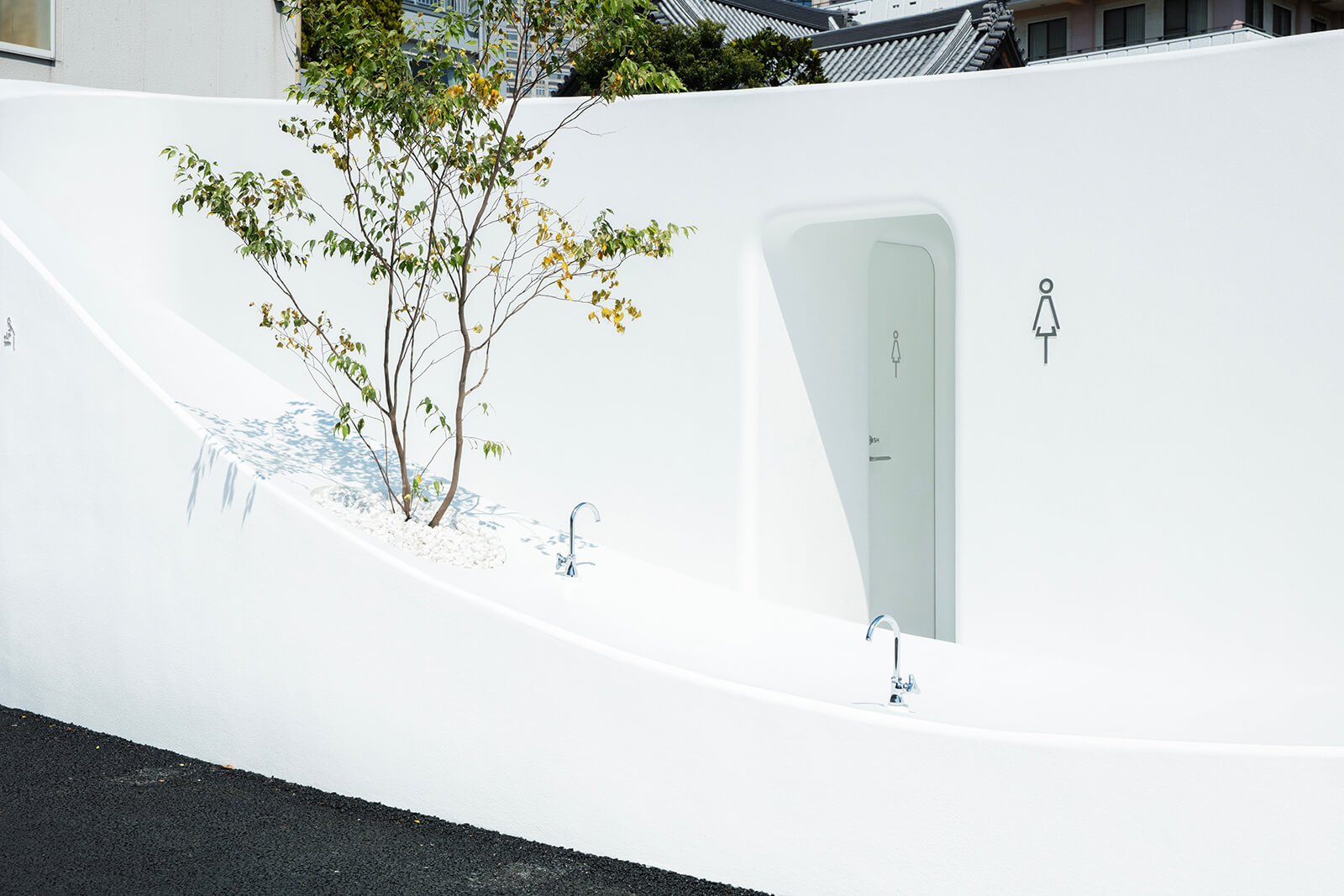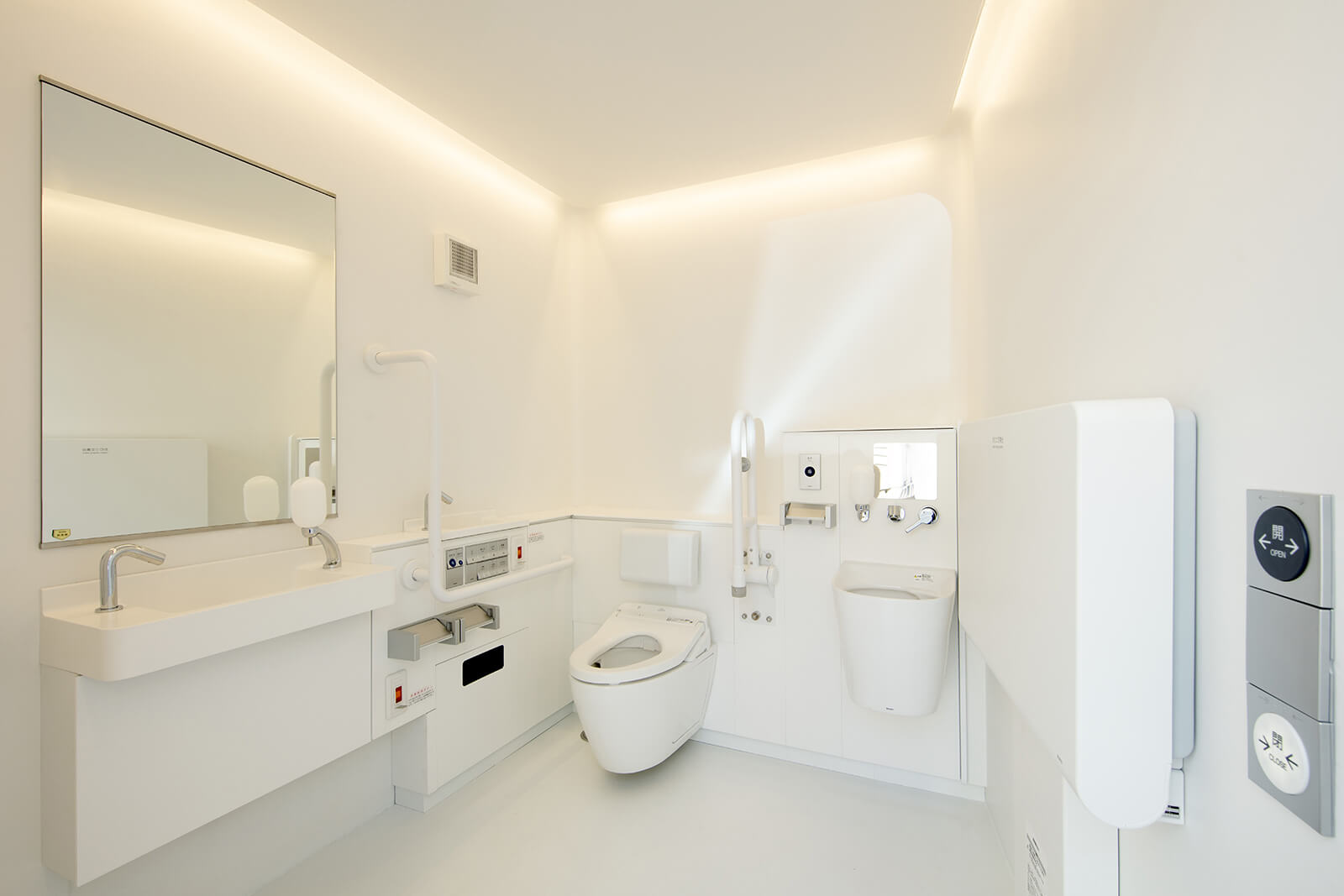Fragmented histories: Reliving The Many Lives of the Nakagin Capsule Tower at MoMA
by Jerry ElengicalOct 08, 2025
•make your fridays matter with a well-read weekend
by Mrinmayee BhootPublished on : Apr 01, 2024
The Tokyo Toilet project was an initiative by the Nippon Foundation to revamp public toilets in the Shibuya prefecture of Tokyo before the commencement of 2020 (rescheduled to 2022) Olympics in Japan. Renowned Japanese architects such as Tadao Ando, Fumihiko Maki, Toyo Ito and Shigeru Ban among others contributed to the project, adding their interpretations to a considerably mundane work of public architecture. The project was conceived to serve the high influx of visitors for the sporting event, as a symbol of Japan’s culture of hospitality. As a part of the same initiative which created new toilet facilities in 17 locations, in 2023, Sou Fujimoto unveiled his contribution in Nishisando, a sculptural structure that seemed to merge design, public art, and functionality.
The facility, designed to resemble a large washbasin is defined by its curving walls and a stark white facade. The street-facing wall is deliberately built at a lower height to invite passersby in while providing wash basins at the street level for people of all ages and abilities. Talking about the toilet’s fluid design, Fujimoto states, “The toilet acts as a single large vessel made for everyone’s use. The shape of the facility, with its large concave centre, is the result of incorporating hand washing stations of various heights. It is intended to create a small community of people, from children to the elderly, to gather around the vessel to wash their hands, drink water, and engage in conversation. We would like to propose a new type of public space where people can gather and communicate around water.”

Essentially, more than just a public facility, the project aims to become a new gathering space, centred around the fluidness of water. This tradition could be traced back to how waterbodies or communal wells acted as spaces of gathering in indigenous cultures. Rooted in the idea of community, accessibility and inclusivity, the structure aims to foster interaction within the local community through an inviting and open design. It asks one to pause and maybe engage with its openness, underscoring the potential of public utilities to become focal points for social gatherings. As Fujimoto has stated, even the white façade was a deliberate design choice meant to signify cleanliness while ensuring the structure stands out.

The comment on white signifying cleanliness and a sense of maintenance prompts a vital question, who cleans these toilets? Post the pandemic, how have the toilets been used? Are they functional, or are they the vestiges of a strange time in all our lives? Auteur filmmaker Wim Wenders’ Perfect Days attempts to portray the afterlife of this project by following a maintenance worker, Hirayama as he goes about his work. The choice to follow a maintenance worker is significant for it highlights how architecture that is conceived of for the benefit of society still requires maintenance.
In fact, the film asks that we think about the public facilities we are given and how we use them. In an interview, Wenders talks about this, mentioning how clean the city of Tokyo was when he visited before making the movie. Someone made it so. In following Hirayama, Wenders asks us to pay attention to the ordinary, just like the toilets themselves. The artistic toilet designs, that betray the hand of their creators challenge conventional perceptions. In the case of Fujimoto’s toilet design, a new public space is proposed, that transforms a banal element of the city into a site for public art and communal engagement.
Name: Nishisando Public Toilet
Location: Yoyogi, Shibuyaku, Tokyo, Japan
Year of completion: 2023
Total Built area: 19.24sqm
Consultants:
Structural engineer(s): DAIWA HOUSE INDUSTRY
Facility Engineer: DAIWA HOUSE INDUSTRY
General contractor: DAIWA HOUSE INDUSTRY
by Mrinmayee Bhoot Oct 10, 2025
Earmarking the Biennale's culmination, STIR speaks to the team behind this year’s British Pavilion, notably a collaboration with Kenya, seeking to probe contentious colonial legacies.
by Sunena V Maju Oct 09, 2025
Under the artistic direction of Florencia Rodriguez, the sixth edition of the biennial reexamines the role of architecture in turbulent times, as both medium and metaphor.
by Jerry Elengical Oct 08, 2025
An exhibition about a demolished Metabolist icon examines how the relationship between design and lived experience can influence readings of present architectural fragments.
by Anushka Sharma Oct 06, 2025
An exploration of how historic wisdom can enrich contemporary living, the Chinese designer transforms a former Suzhou courtyard into a poetic retreat.
 surprise me!
surprise me!
make your fridays matter
SUBSCRIBEEnter your details to sign in
Don’t have an account?
Sign upOr you can sign in with
a single account for all
STIR platforms
All your bookmarks will be available across all your devices.
Stay STIRred
Already have an account?
Sign inOr you can sign up with
Tap on things that interests you.
Select the Conversation Category you would like to watch
Please enter your details and click submit.
Enter the 6-digit code sent at
Verification link sent to check your inbox or spam folder to complete sign up process



by Mrinmayee Bhoot | Published on : Apr 01, 2024
What do you think?